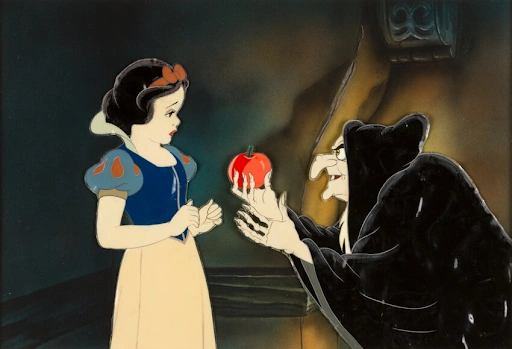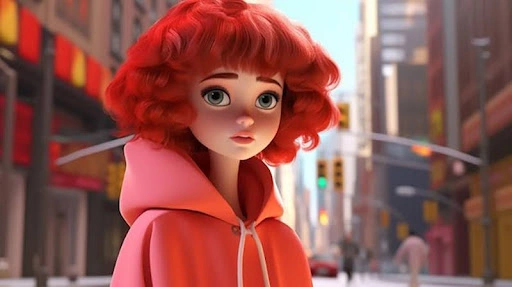.webp)
While 3D animation continues to grow, the uniqueness of 2D animation keeps it popular among creators and audiences alike.
This article will explain the concept of 2D animation, its types, production techniques, and the role of intellectual property in the industry.
What Is 2D Animation?
2D animation is a technique based on two-dimensional images arranged sequentially to create the illusion of movement.
By displaying a series of images in quick succession, 2D animation produces dynamic and engaging visuals.
2D animation is commonly used in creating cartoons, short films, educational videos, and advertisements.
Unlike 3D animation, which features spatial depth, 2D animation focuses on flat images with a simple yet effective perspective.
Additionally, 2D animation allows flexibility in visual storytelling.
With a wide range of styles, from minimalistic to complex, 2D animation can be tailored to suit the characteristics of the story and audience, making it ideal for various platforms.
Types of 2D Animation
1. Cel Animation

Cel animation is a traditional technique where each frame is drawn on transparent sheets. This process is done manually, frame by frame, then assembled and recorded to produce motion.
Example: Early animated films like Snow White and the Seven Dwarfs.
2. Path Animation
This technique uses predetermined paths or trajectories.
With software assistance, characters or objects follow these paths to move smoothly and systematically.
Example: Motion graphic animations often used in explainer videos or digital presentations.
3. Cut-Out Animation
This animation uses cut-out images, such as characters or objects, which are separated into different parts.
These parts are then moved manually or digitally to form a sequence of movements.
Example: Simple animations like puppetry or digital characters with segmented body illustrations.
2D Animation Production Techniques
1. Manual Method
This technique involves drawing each frame directly using traditional media such as paper.
While the process is time-consuming, the final result has a unique artistic quality that is difficult to replicate with technology.
2. Shadow Technique
This technique utilizes silhouettes or shadows in two-dimensional form. By focusing on contours and simple shapes, shadow animation creates a minimalist yet visually appealing effect.
Example: Traditional shadow puppetry like Wayang Kulit.
3. Computerized 2D Animation
Digital technology allows 2D animation production to be easier and faster through software like Adobe Animate, Toon Boom, or OpenToonz.
With digital tools, animators can efficiently draw, control movements, and assemble visual effects.
Advantages of Computerized 2D Animation:
Faster production process
Ability to add various visual effects
High flexibility in editing
4. Using 3D for 2D Visuals
3D technology is also used to support 2D animation, especially for creating backgrounds or complex elements. This technique combines the visual depth of 3D technology with the flat image aesthetics typical of 2D animation.
Why Is 2D Animation Still Popular?
Despite advancements in 3D technology, 2D animation remains relevant and favored for several reasons:
Lower Cost: Producing 2D animation generally requires fewer financial resources compared to 3D animation.
Unique Aesthetics: 2D visuals have a distinctive style that is artistic and easily recognizable.
Creative Flexibility: Its simple production process allows animators to experiment with creative ideas.
Uses of 2D Animation:
Popular films and series such as Adventure Time.
Educational content and visual tutorials.
Interactive advertisements and digital promotions.
The Role of Intellectual Property in 2D Animation
Intellectual property (IP) is a legal right that protects creative works from unauthorized use.
In the animation industry, IP includes copyrights, trademarks, and licenses that grant exclusive rights to creators.
Why Is IP Important?
Copyright Protection: Prevents animated works from being copied or used without permission.
Monetization: Creators can generate revenue through licensing or related product sales.
Recognition and Credibility: IP helps creators gain official recognition for their works.
Iconic characters such as Mickey Mouse and Tom and Jerry are successful examples of IP utilization. Strong copyright protection allows these characters to remain popular and profitable for decades.
Closing
2D animation is an evolving art form that remains relevant in the modern era.
With various techniques such as cel animation, path animation, and cut-out animation, as well as the support of digital technology, 2D animation provides vast creative opportunities for animators.
On the other hand, protecting intellectual property is essential to maintain originality and support sustainable monetization.
With advancing technology and growing creativity, 2D animation will continue to play a vital role in entertainment, education, and digital media in the future.
Related News

3D Animation: Definition, Stages, and Applications Across Various Fields

Immersive Games: Transforming the Future of Interactive Entertainment

Understanding Animation: Types, Functions, and Applications


